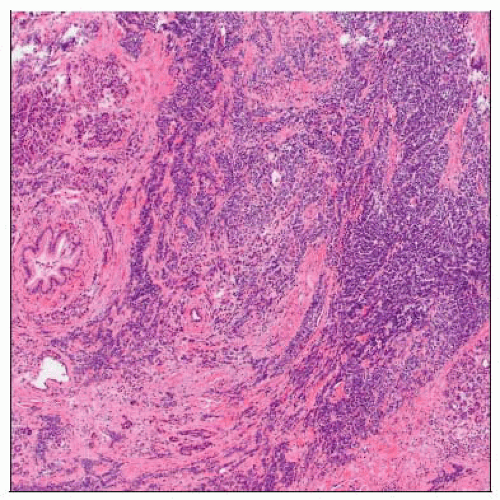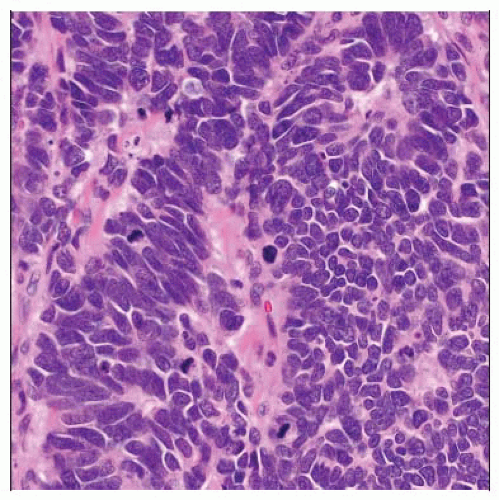Poorly Differentiated Neuroendocrine Carcinoma, Pancreas
Vikram Deshpande, MD
Key Facts
Clinical Issues
Very aggressive neoplasms
Patients may benefit from platinum-based chemotherapy
Microscopic Pathology
Small cell variant
Resembles small cell carcinomas of lung
Scant cytoplasm, hyperchromatic nuclei, prominent nuclear moulding
At least 10 mitotic figures/HPF are required
Large cell variant
Resembles large cell neuroendocrine carcinoma of lung
Frequent mitoses (> 10/10 HPF), vascular invasion,
necrosis
Ancillary Tests
Positive for neuroendocrine markers, keratin
 The pancreatic parenchyma is replaced by a poorly differentiated neuroendocrine carcinoma, featuring small round blue tumor cells organized in sheets and trabeculae. |
TERMINOLOGY
Synonyms
Small cell carcinoma
High-grade neuroendocrine carcinoma
Poorly differentiated endocrine carcinoma
Definitions
Clinically aggressive carcinoma of pancreas with morphological features suggestive of neuroendocrine differentiation and high proliferation (> 10 mitotic figures/10 HPF)
ETIOLOGY/PATHOGENESIS
Unknown
No unequivocal evidence that well-differentiated endocrine neoplasms progress to poorly differentiated carcinomas
CLINICAL ISSUES
Epidemiology
Incidence
Rare, constituting 2-3% of all pancreatic endocrine neoplasms
Presentation
Jaundice
Back pain
Some patients present with hormonal symptoms including Cushing syndrome and hypercalcemia
Stay updated, free articles. Join our Telegram channel

Full access? Get Clinical Tree



